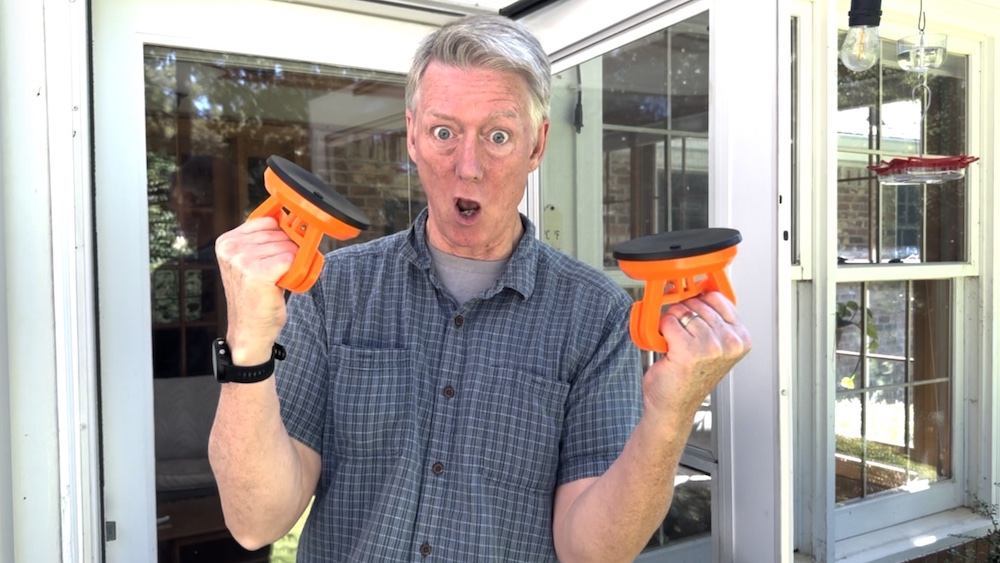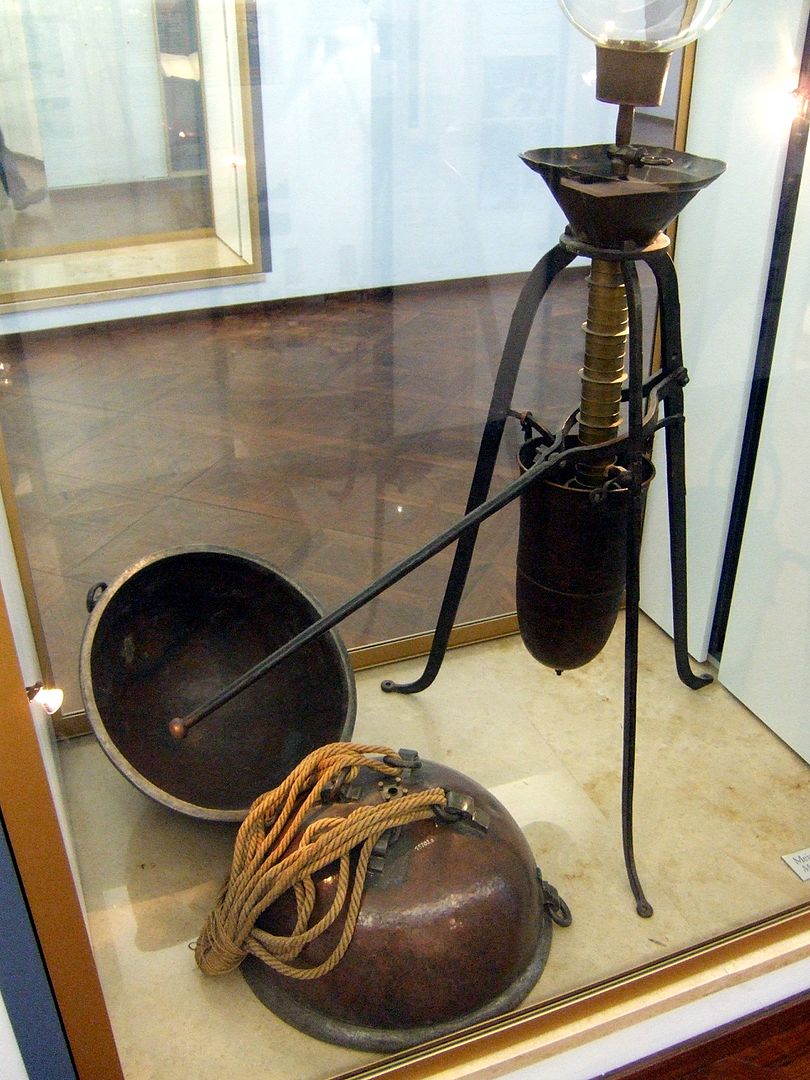How Do Suction Cups Work?

Have you ever thought about how suction cups work? It’s got to be suction, right? Or is it? As it turns out, all we need is some basic physics to explain suction cups. And of course there’s a connection between suction cup physics and building science.
How suction cups work
First, here’s a little video I made to show the physics.
As I mentioned in the video, the key to suction cups is reducing the pressure between the suction cup and the thing it’s stuck to. That could be a piece of glass, tile, or metal. Or it could be another suction cup.
And how does one reduce the pressure in there? In the case of the suction cups I used in the video, you stick them together. Then you close the handle, which expands the volume inside. Because there’s a good seal on the outer edge of the two suction cups, the amount of air between the cups stays the same.
A simple gas law
Hmmm. Same amount of air in a larger volume. Seems like one of the gas laws applies here. Oh, yeah! It’s Boyle’s law. Remember that one? Wikipedia defines it thus:
The absolute pressure exerted by a given mass of an ideal gas is inversely proportional to the volume it occupies if the temperature and amount of gas remain unchanged within a closed system.
Mathematically, we can write it as:
p1 x V1 = p2 x V2
OK, that’s a bit abstract so let’s use numbers. Let’s say the volume between those suction cups doubles when I close the handles. Boyle’s law tells us that the pressure gets cut in half when that happens. They’re inversely proportional, so if one (e.g., volume) goes up by a factor of two, the other (e.g., pressure) goes down by a factor of two.
Pressure difference
When the pressure between the two suction cups decreases, that creates a pressure difference. The air outside the suction cups is still at atmospheric pressure. That causes it to keep the suction cups together. With a good seal, as created by the two pieces of rubber in my orange suction cups, it can take a lot of force to remove the suction cup.
It’s the same between one suction cup and a piece of glass, tile, or metal. I use a phone mount in my car that has a suction cup to keep the mount stuck to the windshield. It’s important to have a good seal, so you need the right materials. And a little bit of water helps, too. Even so, the seal eventually breaks, and the suction cup will come loose.

The suction cup – building science nexus
What I’ve shown here is basically the same thing I showed in my article and video about the beer can pressure crunch. When you have a pressure difference, air can move from the area of higher pressure to the area of lower pressure. That’s a result of the second law of thermodynamics.
Of course, you need something else in addition to the pressure difference for air to move. There has to be a pathway. And that’s why we want a really good air barrier in every house. We can’t control all the pressure differences, but we can reduce the pathways for air leakage.
Other ways that pressure differences relate to building science are the need for makeup air in airtight houses, air movement through duct systems, ventilation system operation, and pretty much any place where we want air to move or not to move. But it goes beyond air, too. The same principle of pressure difference applies to the flow of fluids in general, including the refrigerant in a heat pump, air conditioner, dehumidifier, or refrigerator.
The crux
And there you have it. Suction cups work by creating a pressure difference. (Pressure difference cups would be a more accurate name, but that’s never gonna fly.) That pressure difference holds two of them together or one onto another surface. Pressure differences also can crush beer cans and 55 gallon steel drums. And pressure differences play an enormous role in building science, both in the building enclosure and the mechanical systems.
And why does it matter? Understanding the science behind the building science improves your ability to solve problems and help people.
Allison A. Bailes III, PhD is a speaker, writer, building science consultant, and the founder of Energy Vanguard in Decatur, Georgia. He has a doctorate in physics and is the author of a bestselling book on building science. He also writes the Energy Vanguard Blog. For more updates, you can subscribe to the Energy Vanguard newsletter and follow him on LinkedIn.
Related Articles
The Ol’ Beer Can Pressure Crunch
What Is Pressure? – Understanding Air Leakage
Is Negative Pressure Causing a Problem in Your Home?
Do Airtight Houses Need Makeup Air?
Comments are welcome and moderated. Your comment will not appear below until approved.
This Post Has 15 Comments
Comments are closed.

I thought you were going to explain how this applies to giving one a hicky.
Roy: Funny you should mention that. Back in 1990 when I was a high school physics teacher, I was at a toy store in a mall and bought a little rubber suction cup thingy to use in my classes. After I left the store, I stuck it on my forehead and walked out of the mall like that. Later that evening (or maybe the next day?), I discovered I had given myself a forehead hickey. I think it might have been in summer before school started, but it’s possible I had to go teach with that mark on my forehead.
Yea, I am sure that was the story you told your class, but I would like to hear the real story 😉
Not telling!
But when you think about it…
What really what holds the cup in place is friction, the normal force X the coefficient of (hopefully) static friction. The lowered pressure increases, and determines the direction of the normal force vector.
John: In some cases, it’s friction holding the two cups together. But as I pulled on them to separate them, it wasn’t friction. It was the force created by the difference in air pressure. And as Paul Szymkiewicz wrote in his comment below, that would be ~180 pounds if the inside pressure were zero. It’s not zero, though, so let’s say it’s ~100 pounds of force.
Yeah, it is not 180. 100 sounds more like it, and the force is proportional to the force you had to apply to the lever that you used to close the suction cup, isn’t it?
The vacuum creates the normal force. If you pull against the normal force, the vacuum is holding the cup, or cups together. If you pull at 90 degrees to the normal force (like the vacuum cup holding a soap dish in the shower) then its friction that holds it in place. But it is the vacuum that generates the normal force which is necessary for the friction. So both are true, depending on the angle.
Fun stuff. But “pressure cup” wouldn’t be as catchy.
At 14.7 psi, no wonder you had trouble separating the two suction cups. With 4″ useful diameter, and neglecting the low inside pressure, that’s 180lbs!
Paul: Yeah, “pressure cup” or “pressure difference cup” would never catch on. Thanks for doing that little calculation. I should have done that for the article.
After thinking about what you wrote, Paul, I believe the force would be more like 80 to 100 pounds. I think at best, the volume doubles, which cuts the pressure in half. That would make the pressure difference about half of the atmospheric pressure you stated (14.7 pounds per square inch). Right?
If the suction cup was designed such that its surface is essentially flat when it initially contacts the surface, there should be no air under it, When you begin to pull up on the center there should be close to a vacuum condition under it. The only reason that you need to lift the center up is to ensure that there is enough pressure around the outer edges to seal it and prevent air from entering the space under the cup.
I would think that Allison could figure out a way to actually measure the separation force and see how close it comes to 14.2 psi. (I am assuming that Atlanta is at 1000′ altitude).
Ah yes! Boyle’s Law. As a long-term gas-fitter, this law was one I had to live by. The great thing about it is that its formula is one of the easiest you will ever need to apply in everyday use. For you techno-nerds out there, play with the numbers a bit in everyday situations (putting an airtight lid on a cooling pot throws in the the temperature variable not a factor in the equation, but has valuable lessons to learn regarding pressure reduction in a sealed-gas system) – have fun.
Delta P Cups!
Good one!